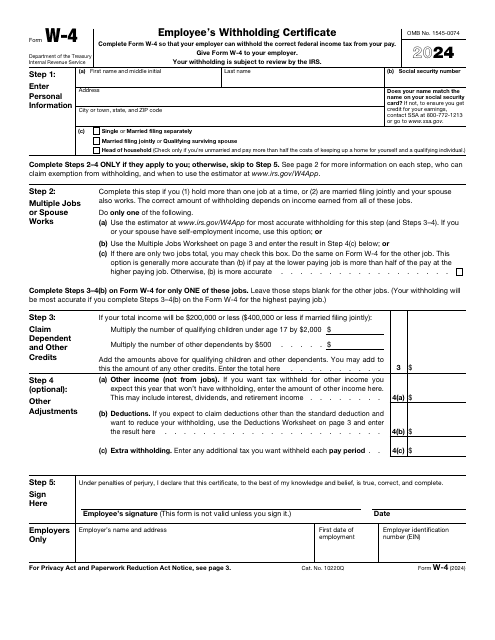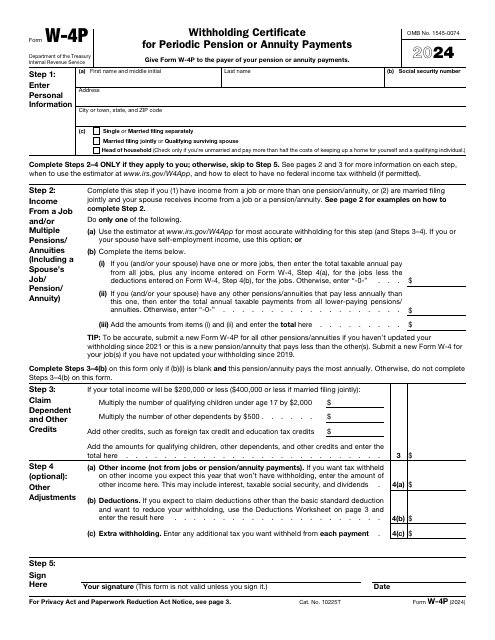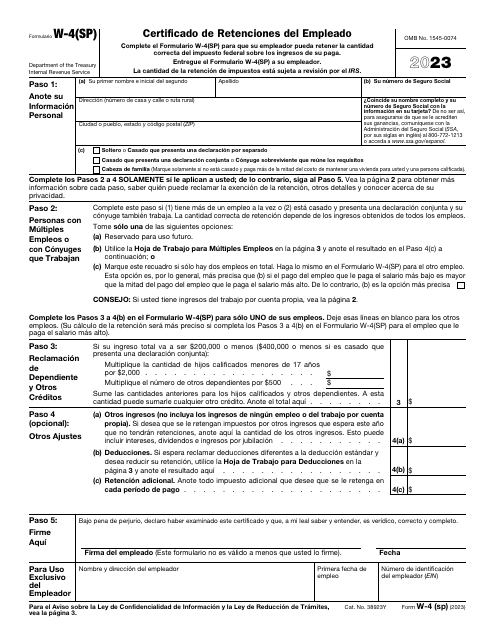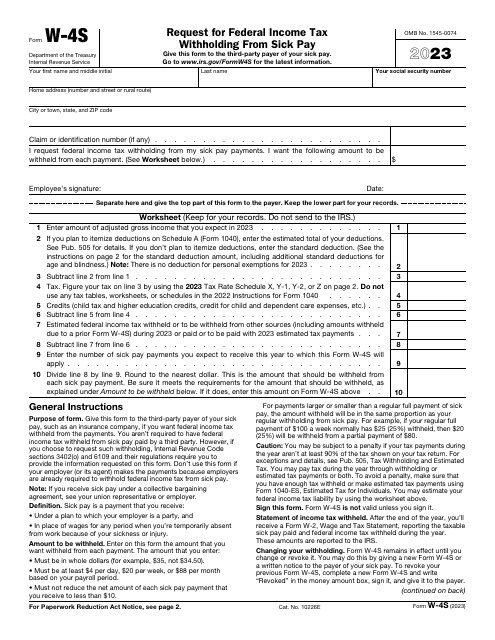IRS W-4 Forms and Instructions
What Are W-4 Forms?
IRS W-4 Forms are used by employees/individuals who receive payments and dividends to let the employers/payers know the amount of federal income tax to be withheld from their paychecks/payments. This series is issued by the Internal Revenue Service (IRS) and includes four forms:
- IRS Form W-4, Employee's Withholding Allowance Certificate, also known as the "IRS Employee Withholding Form", is a general document completed by employees to let the employer know how much money to withhold from their paychecks for federal taxes. There is also a version entirely in Spanish provided by the IRS.
- IRS Form W-4P, Withholding Certificate for Pension or Annuity Payments, also known as the "Pension Withholding Tax Form, is a document used by U.S. citizens, resident aliens, and their estates who receive annuities, pensions, and other deferred compensation to inform payers of the accurate amount of federal income tax to be withheld from the payments.
- IRS Form W-4V, Voluntary Withholding Request is a document used to ask the payer to withhold federal income tax by individuals who receive social security payments, unemployment compensation, or other dividends and distributions that can be defined as a government payment.
- IRS Form W-4S, Request for Federal Income Tax Withholding From Sick Pay is a form given to third-party payers of sick pay.
There are monthly and semi-weekly deposit schedules that determine when you have to deposit withheld federal income taxes on IRS Forms W-4. They tell you when a deposit is due after a tax liability occurs. You must determine what deposit schedule to use before the beginning of the calendar year. If you report $50,000 or less of taxes, you are a monthly schedule depositor; if you report more than $50,000, you are a semi-weekly schedule depositor.
What Are W-4 Forms Used For?
The forms are used for withholding income tax from paychecks, annuities, pensions, social security payments, and other government payments. They must be submitted to employers/payers to inform them of the exact amount of money to be withheld from the payments. Also, you can opt not to have any tax withheld from paychecks/payments, or ask to have an additional amount of tax withheld.
What Is the Difference Between the W-4 and W-2 Forms?
W-2 Forms are tax documents required by the IRS to report an employee's taxes and annual income. Unlike Form W-4, an input document, Form W-2 is an output document, i.e. it is provided to the employee by the employer to give a summary of gross pay for the year. It contains information on how much money was withheld from the employee's gross pay for deductions, for example, local and state taxes.
When Are W-4 Forms Due?
W-4 Form due date depends on the payroll period. Employers must implement a new form by the start of the first payroll period. For example, if you give your employer an employee's withholding allowance certificate form on August 10 and you are paid on the 15th and the 30th of each month, the employer has to implement the form no later than the September 15 payroll. It can be done earlier, but no law requires it.
If you claimed exemption from federal income tax withholding the previous calendar year, you must file a new W-4P form by the February 15 to prolong your exemption for another year. The IRS recommends to submit a new form each year and when your financial or personal situation undergoes changes.
You can ask your payer to withhold federal taxes using the W-4V Form when you first apply for benefits or compensation. However, this is not obligatory, and you can submit the form later when you decide to start withholding. The withholding you choose on this form will remain in force until the payments stop or until you change it by completing a new form.
Related Articles
Documents:
7
This is a formal statement prepared by an employee after figuring out how much tax an employer has to deduct from their paycheck.
This is a formal document used by taxpayers to figure out the amount of deduction applied to regular payments they are entitled to receive.
This is a fiscal document used by recipients of government payments to secure tax deductions from those amounts before the payments are sent to them.





